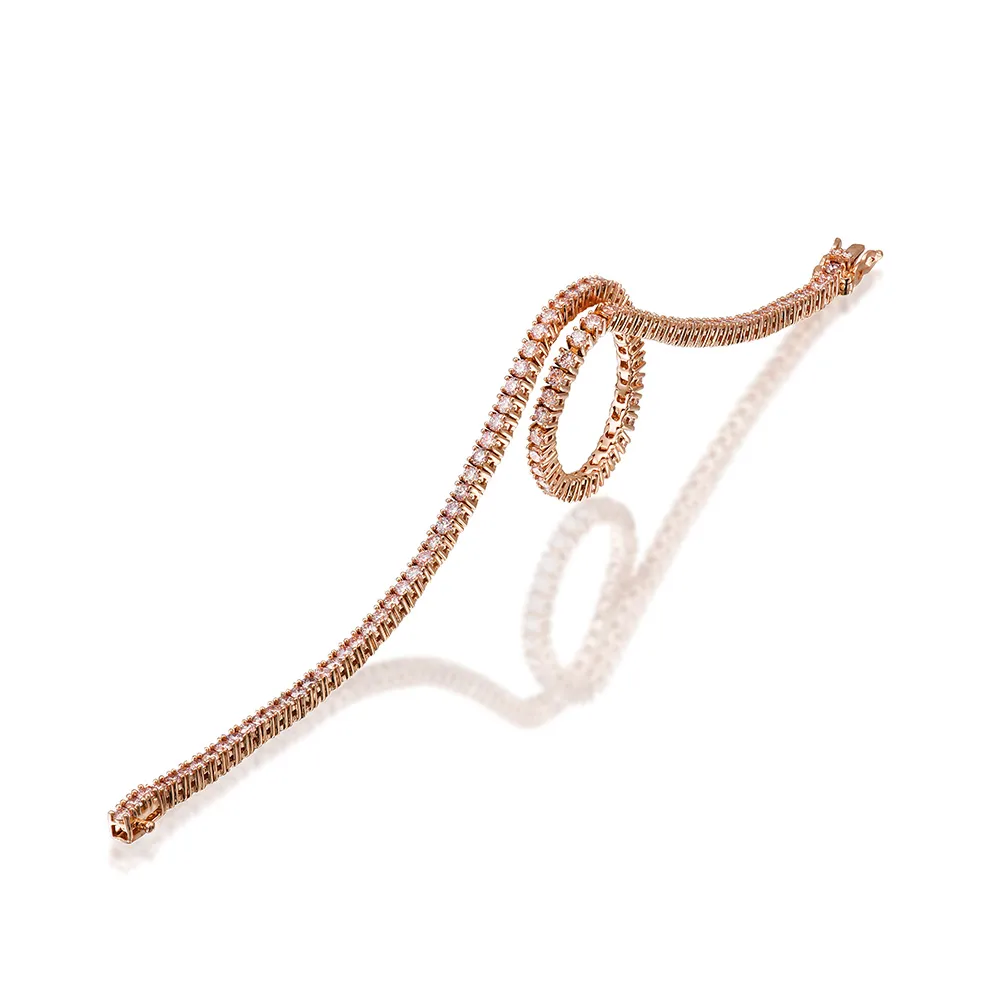Caring for your Jewellery while abroad
Heading to the Mediterranean this season? While you soak up the sun, make sure your diamonds are just as radiant when...
Tennis bracelets should be loose enough to move easily but not so loose that they slip off. The usual rule is that one finger should be able to fit between your wrist and the bracelet. You can get a reliable measurement by loosely wrapping a piece of cotton around your wrist and measuring the length of the cotton.
Tennis bracelets have stood the test of time for good reason. Not only do tennis bracelets hold their value, this classic piece of jewellery exudes elegance and possesses a versatility that allows it to match any outfit for any occasion.
This beautiful design is often seen in the public eye. It’s been spotted on the wrist of hall of fame athletes like Chris Evert—who famously gave the tennis bracelet its name— Serena Williams, and even Queen Elizabeth II. A luxurious investment like a white gold diamond bracelet requires careful consideration.
Once you’ve learned how much you should spend on a diamond bracelet, we can run through how to select the perfect tennis piece, from navigating the designs and settings to finding the proper fit.

Normally, all the diamonds in a tennis bracelet are of the same size and shape. The most frequently utilised diamond shape for tennis bracelets is a round cut; however, there are also bracelet styles that feature other shapes, such as the princess cut or emerald cut diamond.
You can typically select one of three settings for a tennis bracelet: channel, prong and bezel. Each of these setting types hold the diamonds safely in place on the bracelet, but because each setting varies slightly, the general look and feel of the bracelet changes depending on how the stone is held. The type of setting you select comes down to personal preference and style.
For this setting, the diamonds fit tightly between two thin rows of metal that hold the stones together.
In this configuration, three to four prongs per diamond are used to hold it in place. Aside from its security, this design also allows as much light as possible to enter the diamond, making it a popular choice.
Metal goes around each of the diamonds in this style. For half bezels, metal is only linked to two sides of the diamond.
You can usually choose from any one of four main metal types and colours for your tennis bracelet: platinum, yellow gold, white gold, and rose gold.
When selecting the type of material your bracelet is made of, the primary considerations are colour and budget. Platinum, the priciest metal, is silver in colour but is quite different from standard silver. Platinum is much sturdier and resists scratches and corrosion incredibly well.
Yellow, white, and rose gold are mixtures of pure gold and other metal alloys. For rose gold, copper is mixed with yellow gold, giving it its pink hue. Gold is combined with silver or nickel to create white gold, and yellow gold is pure gold mixed with zinc or copper. It’s best to balance your style preferences and budget when selecting a metal for your tennis bracelet.
Remember that a tennis bracelet should be loose enough to move freely but not so loose that it can slide off. A quick check for a good fit is to see if you can fit a finger between the bracelet and your wrist.
Wrap a tape measure loosely around your wrist to get the exact measurement, but if you’re shopping for someone else, 18-19 cm is the most common bracelet size for women.
While there isn’t a right or wrong bracelet size, you should select a tennis bracelet that you feel comfortable wearing. Find the perfect in-between of loose but not too loose, and remember to measure your wrist so you’ll know when you’re looking at the right size of bracelet for you.
Heading to the Mediterranean this season? While you soak up the sun, make sure your diamonds are just as radiant when...
When it comes to purchasing an engagement ring, the diamond isn’t the only star of the show. The setting style can...
Investing in gold jewellery is a time-honoured tradition that continues to shine in 2025. Gold has been a reliable...